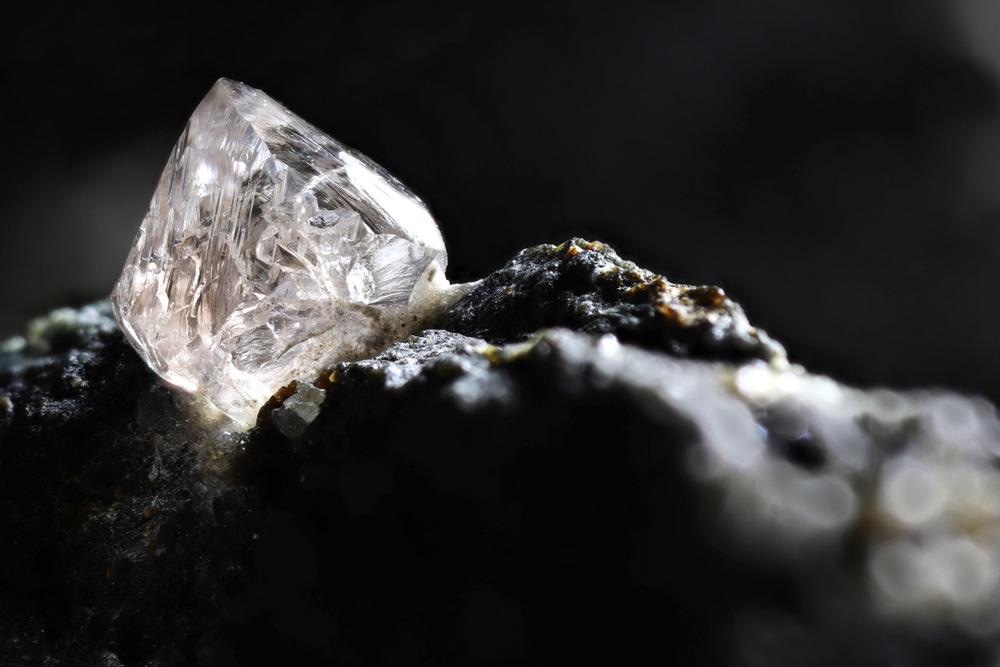Employing the capillary-driven, self-assembly technique, a group of researchers demonstrated a practical method for generating ordered arrays of nanodiamonds. The research was published in the journal ACS Nano.

Study: Template-Assisted Self-Assembly of Fluorescent Nanodiamonds for Scalable Quantum Technologies. Image Credit: Bjoern Wylezich/Shutterstock.com
The team demonstrated how independent nanodiamonds with thicknesses less than 50 nm may be arranged precisely over millimeter-scale surfaces. Over 200 produced nanodiamonds were measured, resulting in a quantitative comprehension of their morphological, photonic, and quantum characteristics.
Pulverized nanodiamonds with nitrogen-vacancy (NV) centers create colloidal suspensions and act as nanoscale quantum detectors. However, the capacity to place isolated nanodiamonds and quantitatively examine aspects that determine their photonic and quantum properties is limited due to differences in their dimension, morphology, and surface composition.
Benefits of Nanodiamond Particles
Although bulk diamond crystallites have the ideal spin cohesion characteristics, nanodiamonds with sizes less than 100 nm can still prevent the spin quantum state from noise and interference.
Also, nanodiamonds can be diffused in an organic solvent to form dispersions and located within nanometric intervals of biological or synthetic structures.
Nanodiamonds offer a platform for subdiffraction restricted scanning, in vitro and in vivo monitoring, and incorporation with complicated photonic devices since they are optically resistant, nontoxic, and quantum-sensitive particles.
Methods to Synthesis Nano-Diamonds
Detonation Synthesis and grinding bulky crystals are the two most common ways to synthesize nanodiamonds. The surface shell of carbon materials and higher absorption defect levels linked with their fabrication restrict the creation and retention of NV centers, making detonation nanodiamonds effective as pigments and sensors.
On the other hand, ground nanodiamonds retain the synthetic purification of their original crystal at the expense of homogeneity. The thickness, morphology, surface characteristics, and amount of NV centers of milled nanodiamonds differ tremendously.
The photonic and quantum characteristics of nanodiamonds are said to be inhomogeneous due to these structural and chemical variances.
Challenges Associated with Nano-Diamond Assembly
Based on the milling conditions, the variance in nanodiamond size might range from 10% to 50%. This variance, in conjunction with morphology and surface chemical complexity, makes it difficult to arrange or integrate individual particles and incorporate them into applications.
Self-assembly methods were used to assemble groups of nanodiamonds. Energy levels between the nanoparticles and particular substrates were used to insert the nanodiamonds.
However, these methods restrict the types of templates that may be employed and obstruct large-scale statistical investigations of individual nanodiamonds.
Capillary-Driven, Template-Aided Self Assembly (TASA)
The researchers used capillary-driven, template-assisted self-assembly (TASA) to create tiny arrays of separated nanodiamonds in their study. TASA blends the scaling of interfacial assembly with the efficiency and flexibility of nanofabrication.
It has been used to guide the alignment of heterogeneous particles of different materials as well as to arrange isolated nanoparticles.
The researchers investigated the numerical variation of the morphological, photonic, and spin characteristics of nanodiamonds utilizing these arrangements and an optical measurement system. Their research discovered statistical differences in nanodiamond attributes that were linked to the underlying diamond substance, the nanodiamond formation process, and the proximity of the NV centers.
This knowledge can aid in the development of enhanced nanodiamond materials, and the adaptable TASA approach may be used to fabricate quantum detecting and quantum optoelectronics devices.
Research Findings and Conclusion
The TASA approach was used to create vast patterns of individual nanodiamonds with great productivity, by the researchers.
The team used these arrangements to conduct analyses of nanodiamond structural, photonic, and quantum characteristics from more than 21900 individual particles, discovering a broad range of transmitters in the nanoparticles; ~30 % dark nanodiamonds and ~11 % single NV centers, varying from 0 to >20 NV centers per nanoparticle were observed.
According to the researchers, the pattern was linked to geographic variability in nitrogen integration during the primary bulk crystal formation and random production of NV centers inside nanodiamonds.
Significant control over nitrogen integration rates during crystal development, vacancy production during particle illumination, and crystallite size homogeneity might lead to tighter NV center distribution management. The energy levels and spin durations of the fluorescent nanodiamonds varied greatly.
They discovered that fluorescent nanodiamonds in their sample were not associated with nanodiamond size, but rather demonstrated heterogeneity in the NV center environment, which could be caused by differences in the intrinsic crystal structural characteristics, or the NV center distance from the nanodiamond surface.
By regulating the surface conditions, more homogeneous charge configurations and extended spin durations should be possible. Their findings suggest that duplicating their work with nanodiamonds of various sizes, produced under different circumstances, and with a range of surface terminations might help us better understand the assembly process and the causes of non - uniformity in these quantum transmitters.
Continue reading: Bending Diamond – Why is it Useful?
Reference
Henry J. Shulevitz. et al. (2022). Template-Assisted Self-Assembly of Fluorescent Nanodiamonds for Scalable Quantum Technologies. ACS Nano. Available at: https://pubs.acs.org/doi/10.1021/acsnano.1c09839
Disclaimer: The views expressed here are those of the author expressed in their private capacity and do not necessarily represent the views of AZoM.com Limited T/A AZoNetwork the owner and operator of this website. This disclaimer forms part of the Terms and conditions of use of this website.